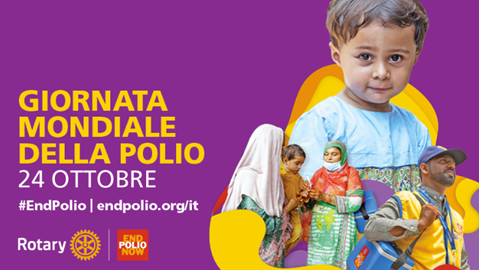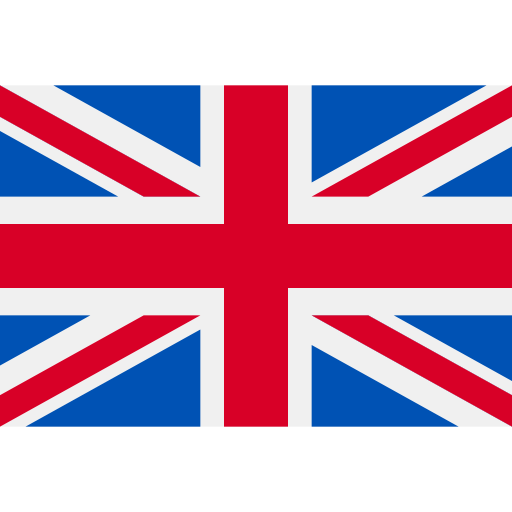World Polio Day: One Day, One Goal, The End of Polio!
24 October marks World Polio Day, an annual event launched to raise awareness of the importance of vaccination against this crippling disease. This year also marks the 36th anniversary of the Global Polio Eradication Initiative (GPEI), created in 1988 by an alliance of five partners: the World Health Organisation (WHO), UNICEF, the US Centres for Disease Control and Prevention (CDC), Rotary International and the Bill and Melinda Gates Foundation. The goal of this global initiative is ambitious yet crucial: to eradicate polio and rid the world of one of the oldest and most devastating diseases in human history. This day, therefore, is not only a time to honour the remarkable progress that has been made, but also an opportunity to reflect on the challenges that still lie ahead. Polio, in fact, is still threatening certain regions of the world, and our common commitment will be decisive in winning this battle once and for all.

Polio, an acute and highly contagious infectious disease, is still one of the most significant global public health challenges. Caused by polioviruses (belonging to the Enterovirus genus), this disease attacks the nervous system, affecting neural cells and causing paralysis that, in severe cases, can be fatal. The virus affects only humans and is mainly transmitted by the faeco-oral route, through the consumption of contaminated water or food, or via respiratory droplets emitted by infected, even if asymptomatic, individuals.
The poliovirus enters the body through the mouth and initially multiplies in the oropharynx, tonsils, cervical lymph nodes and gastrointestinal tract. The infection progresses in cycles of viral replication, destroying infected cells.
In some cases, the virus can cross the blood-brain barrier and spread to the central nervous system. The destruction of motor neurons ( which are unable to regenerate) leads to paralysis of the affected muscles, irreversibly impairing their functionality. During the acute phase, due to the phlogistic process, the neurons adjacent to the infected ones are also affected, which is why a partial recovery can be observed during remission, although the disease has no specific pharmacological treatment. Moreover, several years (15-40) following the infection a worsening of the pathology can be observed, which is presumably attributable to the degeneration of those neurons (post-polio syndrome) that were not destroyed by the virus but had nevertheless suffered during the acute phase of the disease.
In the absence of effective drugs against polio, prevention through vaccination is the only defence. Thanks to vaccines, available in both oral and injectable forms, enormous strides have been made in reducing polio cases worldwide.

Since mass vaccination campaigns began, the number of global cases has been reduced by over 99%, with the disease eradicated in most of the world (polio-free countries) and confined to a few areas that are difficult to reach for cultural, religious and social reasons (war zones).
Hence, despite the enormous progress made in the field of vaccination, which today we are witnessing more than ever thanks to the new anti-SARS-Cov-2 mRNA vaccines, the possibility of eradicating polio universally will not depend so much on a new vaccine technology as on the ability to treat the entire population with the vaccines currently in use. The reappearance of polio in polio-free countries remains a possibility as long as there are areas of the world where the disease is present and widespread.
In fact, polio is still endemic in two countries, Afghanistan and Pakistan, and of the 194 countries in the world, there are 35 countries at epidemic risk in five (Africa, the Americas, Eastern Mediterranean, Europe and South-East Asia) of the six WHO regions. Lastly, for some countries such as Burkina Faso, Eritrea, Ethiopia, Guinea, Guinea-Bissau, Liberia, Mauritania, Senegal, Sierra Leone, South Sudan, Tajikistan and Uganda, the risk of polio returning is increasingly tangible due to low levels of immunity and surveillance (see attached fact sheet).
This is all the more worrying in view of the current historical period in which war in the Middle East, in addition to its appalling direct consequences, poses a latent risk for the reintroduction of the disease and the possibility of outbreaks.

This danger has led to the peremptory need for mass vaccination. Nearly 560,000 children under the age of ten were in fact vaccinated against polio during the first round of an emergency vaccination campaign conducted in three phases from 1 to 12 September 2024 in the Gaza Strip.
The 12-day campaign provided the new oral polio type 2 vaccine (nOPV2) to 558,963 children through meticulous planning and coordination. This involved the use of a vast network of teams, who vaccinated at selected fixed sites at health facilities and outreach centres.
Mobile and transit teams actively reached families living in shelters, tents and IDP camps, while community workers engaged families in order to raise awareness before and during the campaign.
Despite these challenges and the conditions that families in the Gaza Strip have endured over the past 11 months, families have flocked to health facilities to have their children vaccinated. A second round of the campaign will follow, ideally within four weeks, to provide a second dose of nOPV2 to children in Gaza to stop the epidemic and prevent its international spread.
This demonstrates how essential it is to continue to ensure high global vaccination coverage; universal immunisation, in fact, is crucial to prevent a new spread of the virus and to stop transmission in vulnerable settings.
One of the most active organisations in this battle is the Rotary Foundation, which has led the End Polio Now programme for more than 30 years. In partnership with the World Health Organisation (WHO), UNICEF and other global institutions, Rotary has been instrumental in reducing polio cases by funding vaccination campaigns, surveillance and awareness projects around the world.
Through its ongoing commitment, Rotary works tirelessly to ensure that every child, everywhere has access to the vaccine.
Since the launch of PolioPlus in 1985 and its collaboration with the Global Polio Eradication Initiative (GPEI) in 1988, Rotary has always been an active participant in the fight against polio with the goal of eradicating the disease and ridding the world of its sequelae. In this regard, it is worth remembering that at the time of GPEI's founding, the wild poliovirus was paralysing hundreds of children every day, with an estimated 350,000 polio cases per year in 125 countries. Since then, cases have dropped by more than 99.9 per cent, preventing paralysis for more than 20 million people.
The goal of complete polio eradication is now closer than ever, but has not yet been achieved. It is necessary to maintain a high level of vigilance, especially in regions where the virus is still active, and to ensure that vaccination policies are intensified everywhere, even in countries where polio has not been present for years. The cost of the oral vaccine to be administered in those areas is the lowest of any vaccine (just over 60 euro cents) thanks to the fact that its inventor (Sabin) donated it to humankind without retaining any royalties, which is why humanitarian associations such as Rotary carry out fundraising to finance vaccination campaigns.
To celebrate World Polio Day, numerous initiatives will be promoted on a national and local level to mark this important anniversary, starting next Monday 21 October and in the days to follow. In particular, among the events carried out by the various Rotary and Rotaract Clubs, we would like to mention some initiatives such as ‘the suspended coffee to fight polio’.
By way of example, here are two of the many initiatives promoted in Sardinia on Saturday 26 October.
New initiatives like this one will be published here as they are announced.
Below is the poster of the two initiatives:





In this context, the Vaccinarsinsardegna.org team invites you to adhere to commendable initiatives such as these, aimed at financing the purchase of polio vaccines for endemic areas in developing countries, but above all invites you to consciously adhere to the vaccinations and vaccination booster shots scheduled by the vaccination programme, which obviously includes the polio vaccination.
During this Polio Week, it is crucial to remember that we cannot afford to let our guard down until the virus is completely eradicated.
Every child who does not receive the vaccine constitutes a vulnerability in the global battle against the disease, so it is essential that the international community continues to invest in vaccination and surveillance so that one day we can truly celebrate a world completely free of polio.



